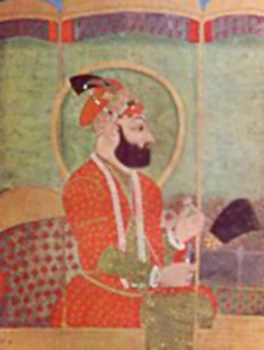 According to the history of Jaunpur District the continuous existence of this region can be seen till Late Vedic Period. The district was a major pious ground for meditations and contemplations of sages, Rishis and Maharshis. According to the history, the first arrival in this district was of Raghuvanshi Kshatriyas. In this district, early inhabitants were the Bhars and the Kshatriyas began to have conflicts with them. During the Sharqi period, many grand buildings, mosques and mausoleums were built here. Firoz Shah Tughlaq had laid the foundations of the Atala Mosque in 1393 AD but it was completed by Ibrahim Shah Suri in 1408 AD.
According to the history of Jaunpur District the continuous existence of this region can be seen till Late Vedic Period. The district was a major pious ground for meditations and contemplations of sages, Rishis and Maharshis. According to the history, the first arrival in this district was of Raghuvanshi Kshatriyas. In this district, early inhabitants were the Bhars and the Kshatriyas began to have conflicts with them. During the Sharqi period, many grand buildings, mosques and mausoleums were built here. Firoz Shah Tughlaq had laid the foundations of the Atala Mosque in 1393 AD but it was completed by Ibrahim Shah Suri in 1408 AD.
As per the history of Jaunpur District, Lodhi Dynasty ruled the throne of Jaunpur from 1484 AD to 1525 AD. In 1526 AD Babur attacked Delhi and defeated Ibrahim Lodi in the first battle of Panipat. To conquer Jaunpur, Babur sent his son Humayun, who defeated the ruler of Jaunpur. It was during the reign of Akbar that the `Shahi Pul` of Jaunpur was built.
According to scholars Jaunpur had also been influenced by Buddhism. In 1722 AD after being a part of the Mughal Sultanate for a century and a half, Jaunpur was entrusted to the Nawab of Awadh. Further, later in 1775 AD Jaunpur too, along with Banaras went into the hands of the British rulers. From 1775 AD to 1788 AD Jaunpur was under the dominion of Banaras. In 1818 Jaunpur became a separate district. In 1820, Azamgarh District was also brought under Jaunpur but whole of Azamgarh in 1830 was separated from Jaunpur.
History of Jaunpur District also says about the contribution of Jaunpur District in the freedom struggle of the country. During the British period Jaunpur District has been a witness of the rebellion against the power of the state. In the year 1885, Indian National Congress was established. In the Non Cooperation Movement of Mahatma Gandhi in 1920, Jaunpur took part with dedication and zeal. During this period Motilal Nehru, Sarojini Naidu, Jawaharlal Nehru, Madan Mohan Malviya, also visited the district and meetings were organized. In October 1929, Mahatma Gandhi too visited Jaunpur. Rebellion under the Quit India Movement started in the district on 10th of August, 1942. Thus, in this way Jaunpur District had played an important role in the freedom struggle against the British rulers.






